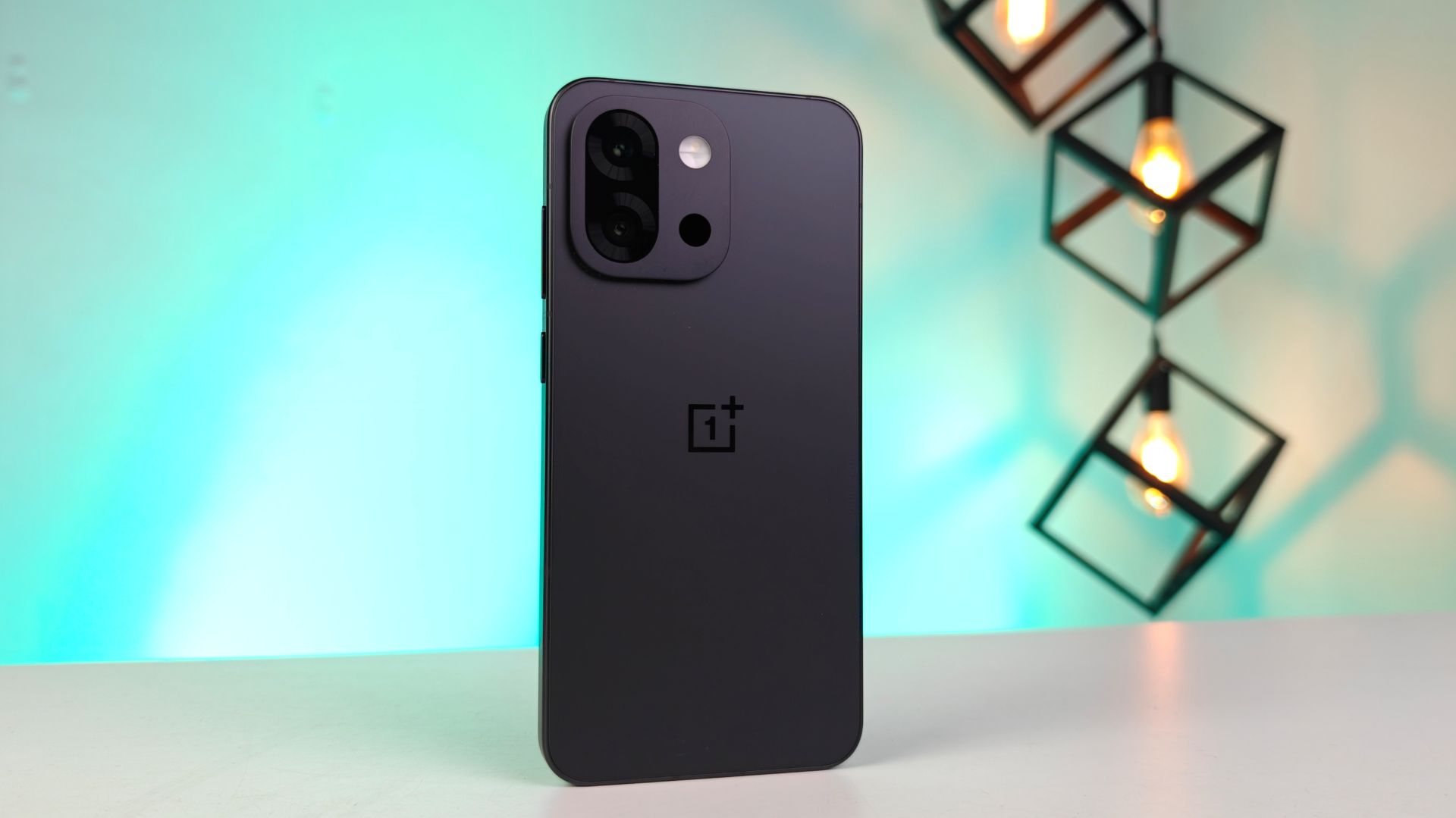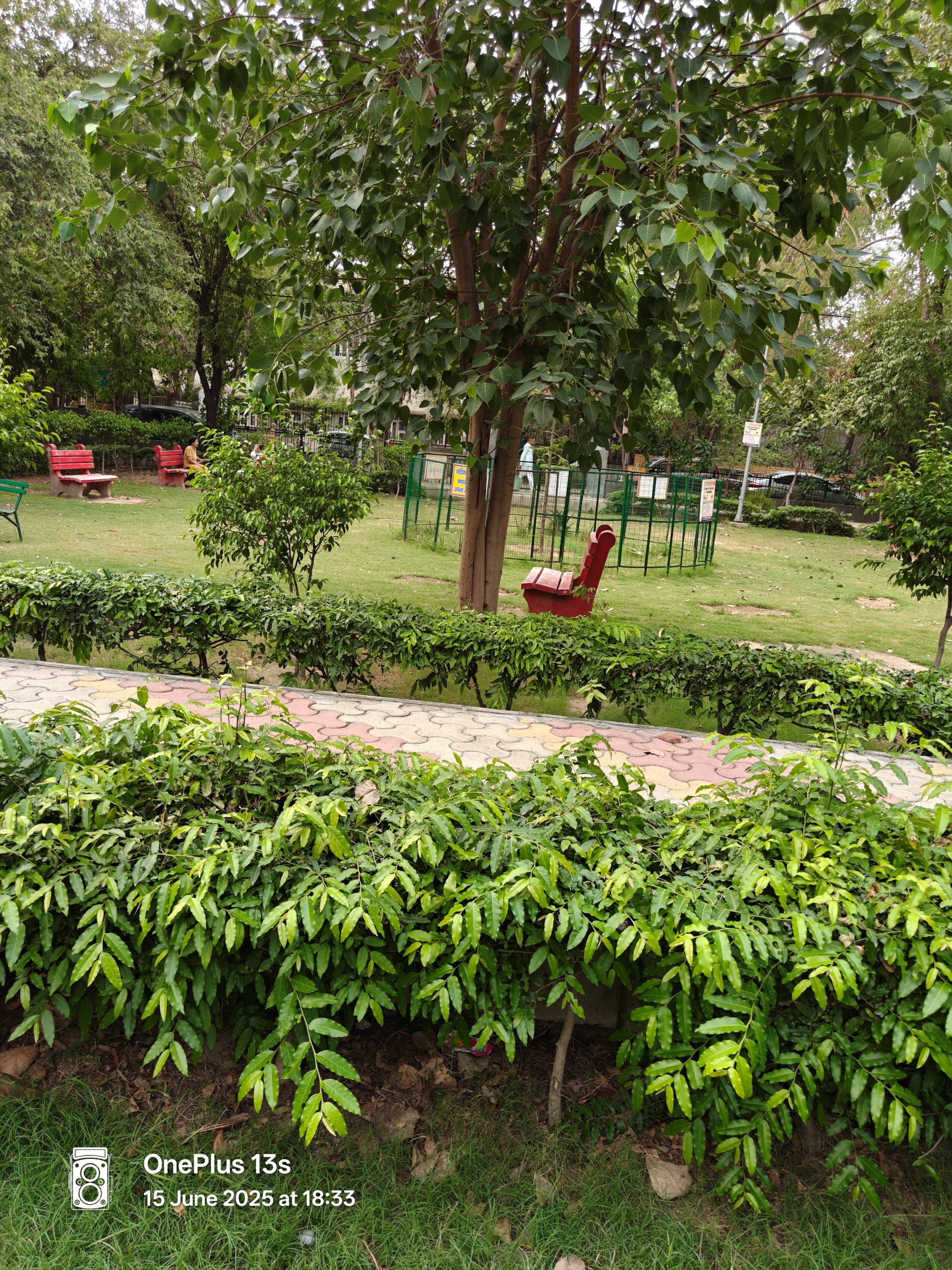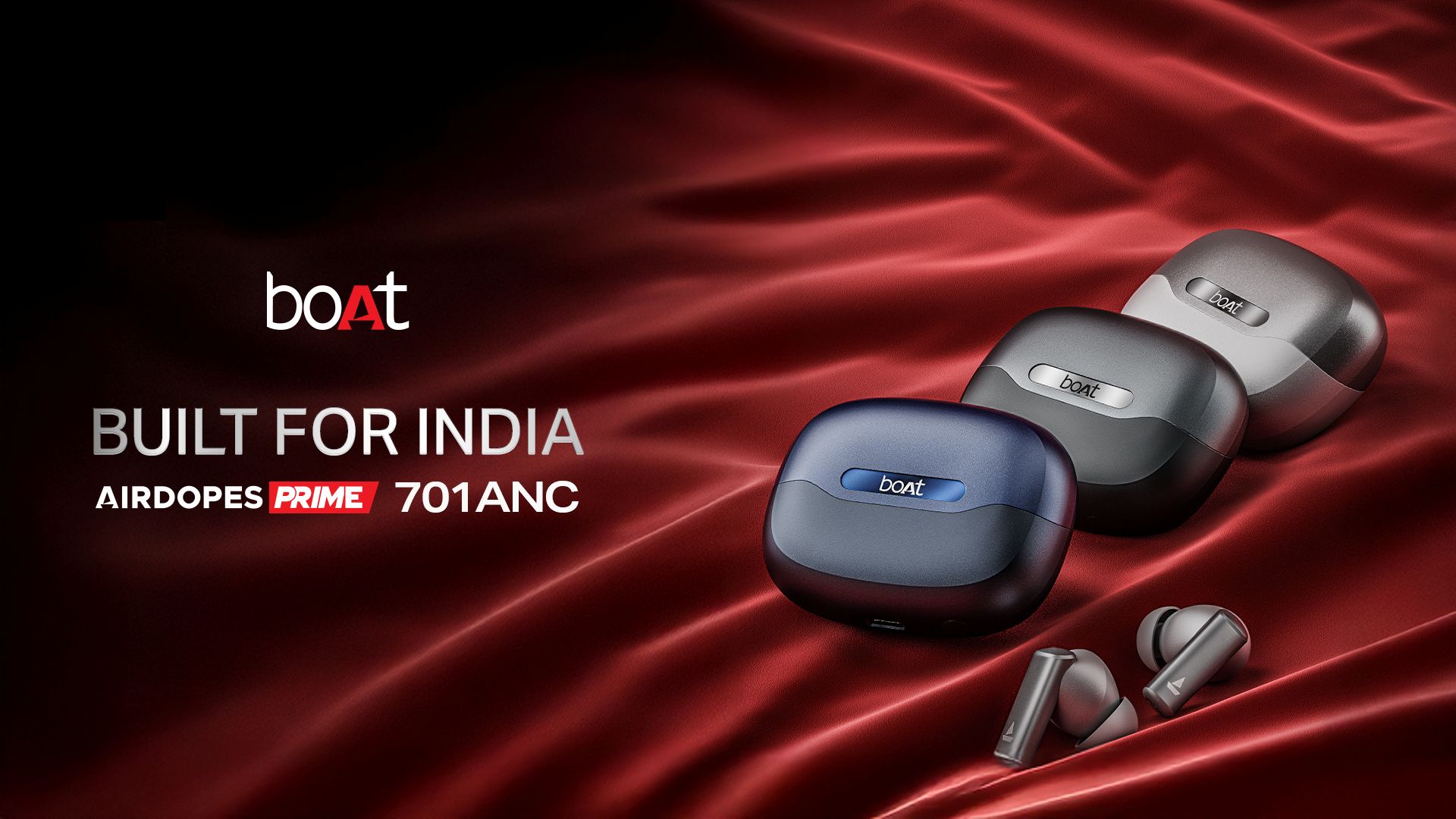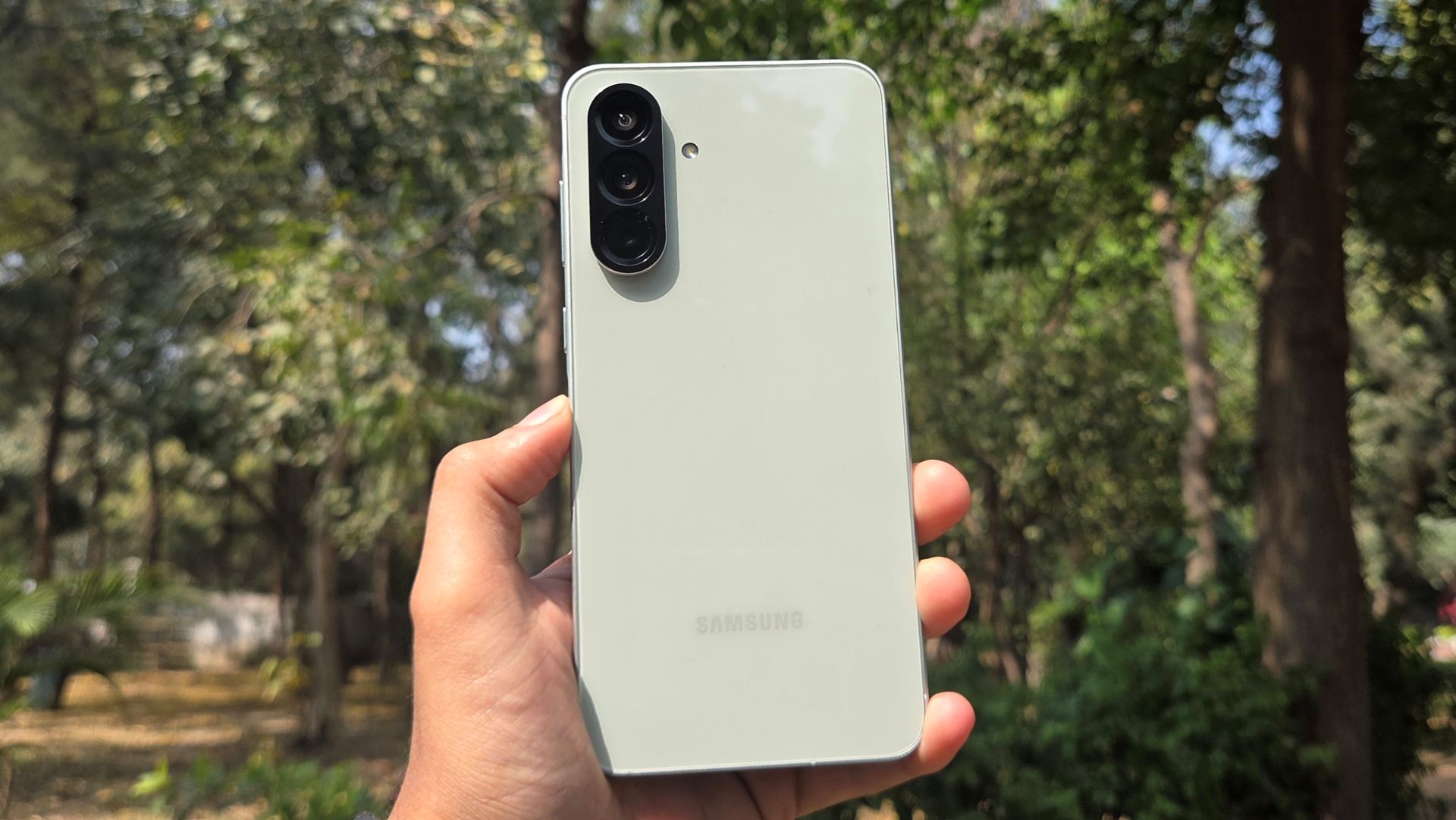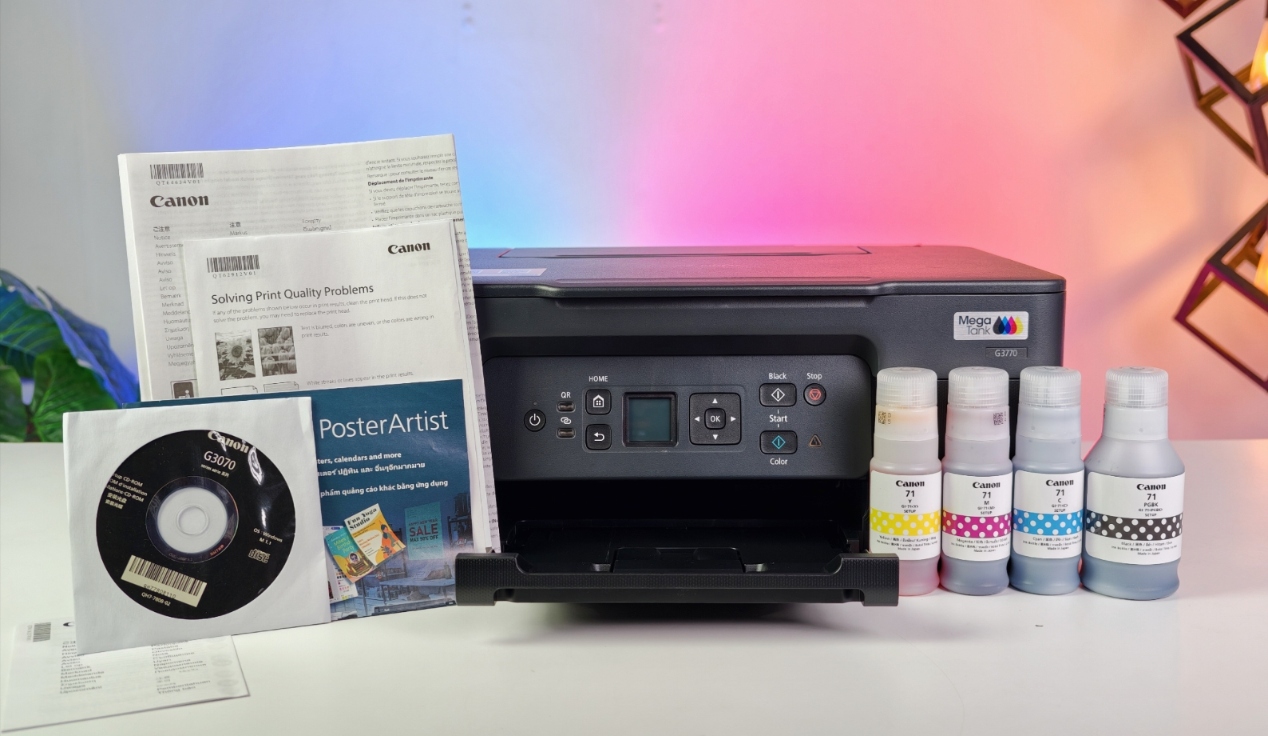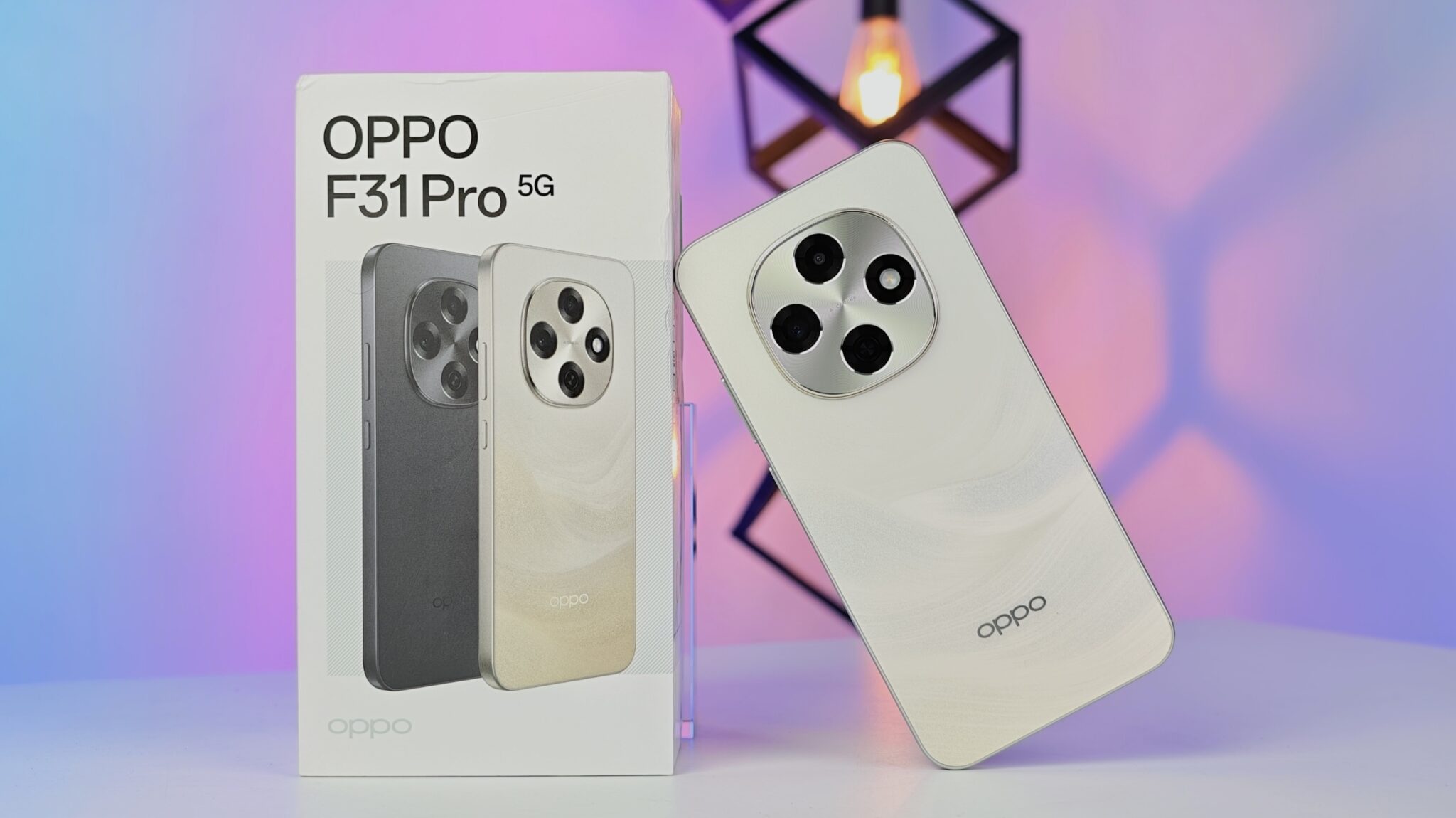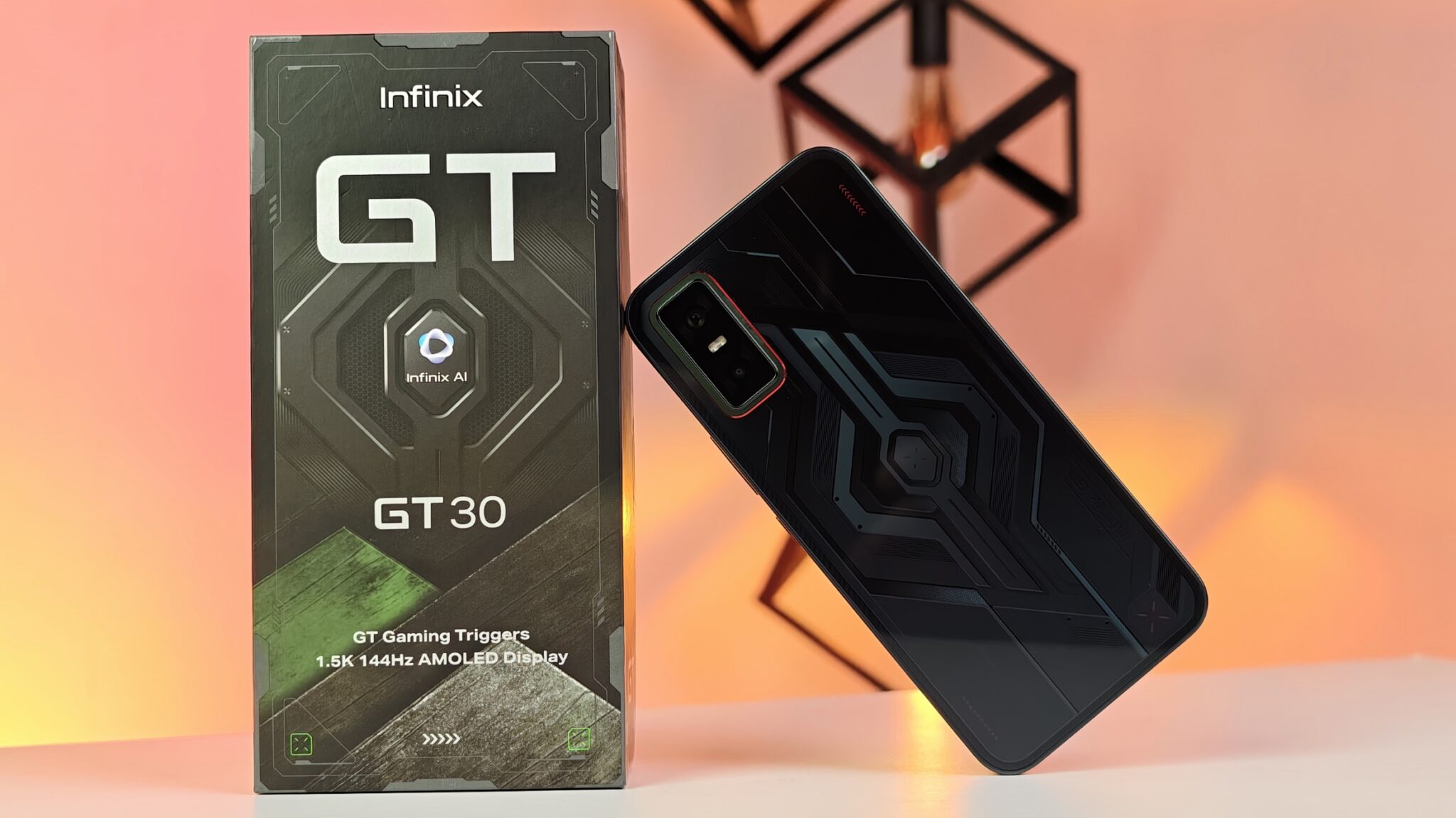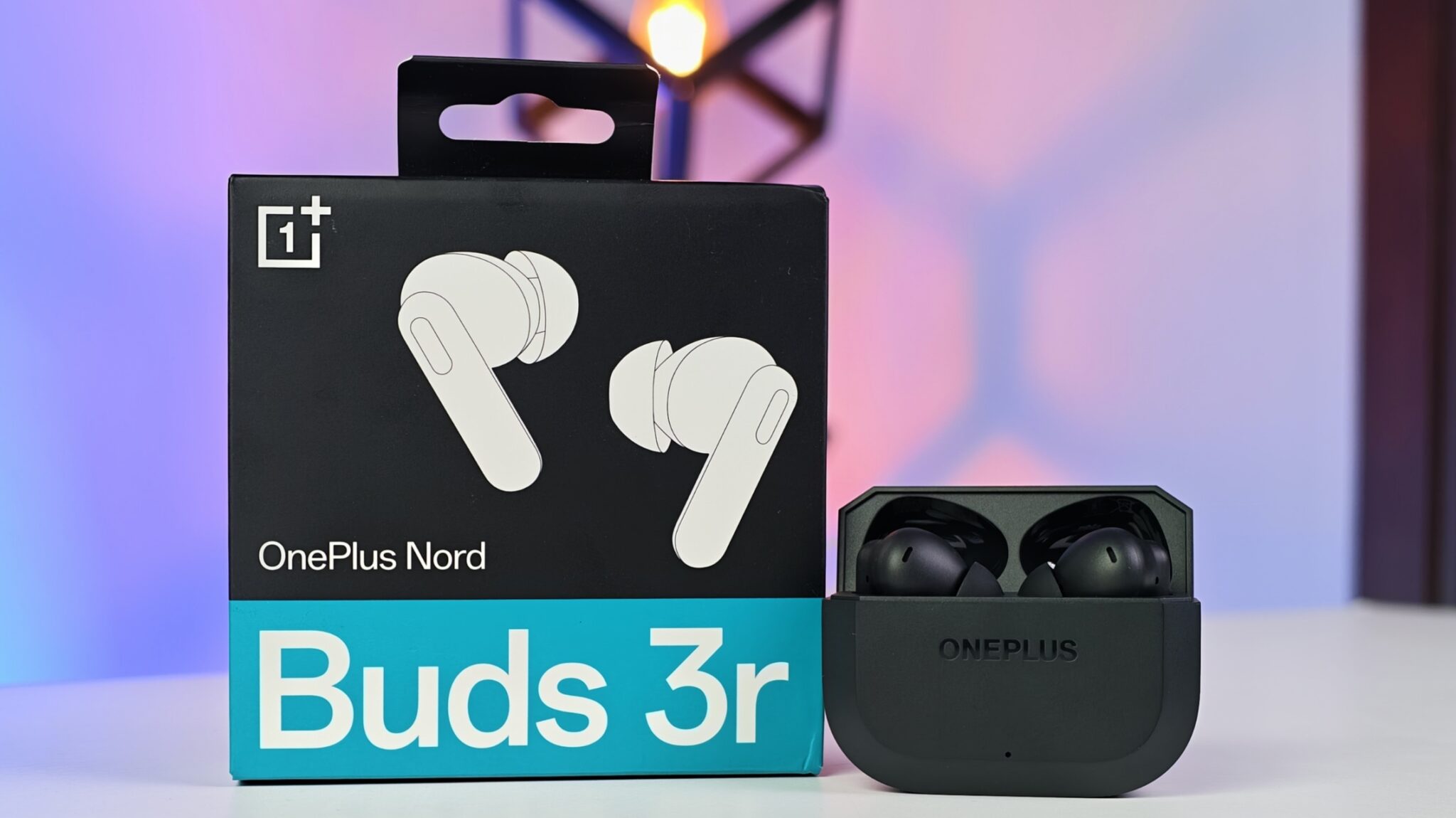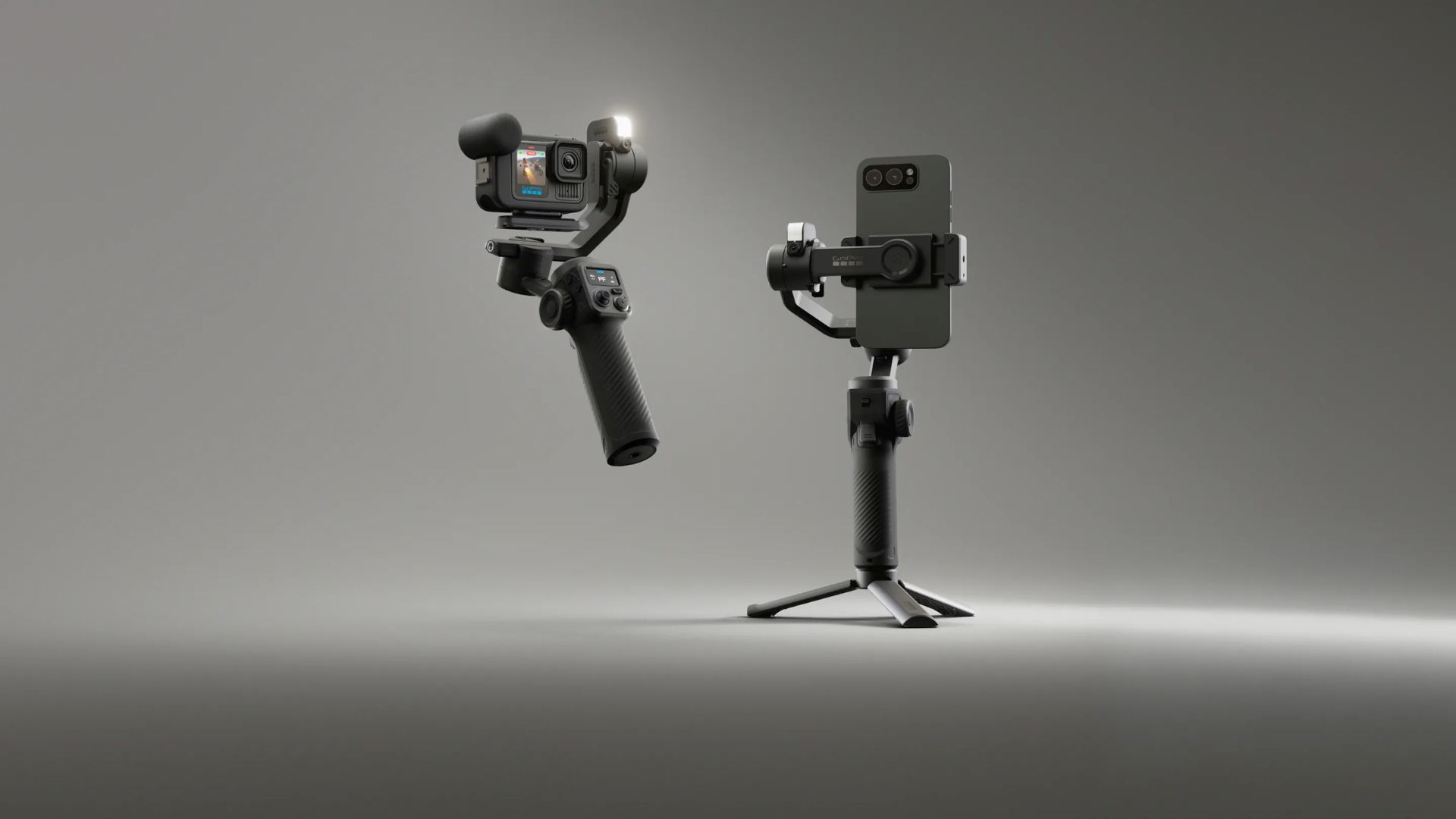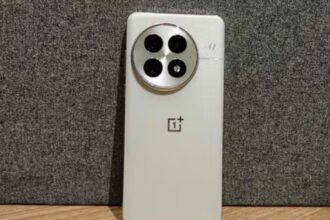As someone who’s reviewed more smartphones than I can count, I’ve learned to approach each new device with a key question in mind: how does this phone actually feel to live with day in, day out? The OnePlus 13s has been my daily companion for several weeks now, and I’ve run it through everything-routine chores, power-hungry apps, extended gaming sessions, and those inevitable low-battery sprints. This review reflects that hands-on experience, aiming to give you a straightforward, unbiased assessment of what this phone delivers.
Key Takeaways:
- Premium design and excellent build quality.
- Vivid, ultra-responsive display with strong brightness.
- Flagship-level performance powered by Snapdragon 8 Elite.
- Dual-camera system performs well in most lighting conditions, though low-light video needs work.
- Excellent battery life with rapid charging option (thanks to 80W SuperVOOC).
- Polished and smooth OxygenOS experience with long-term update commitment.
- Loud, well-balanced stereo speakers.
- Fast and reliable in-display fingerprint sensor.
- IP65 water and dust resistance.
- Competitive pricing, but tough competition.
Design and Ergonomics: Premium, With a Purpose
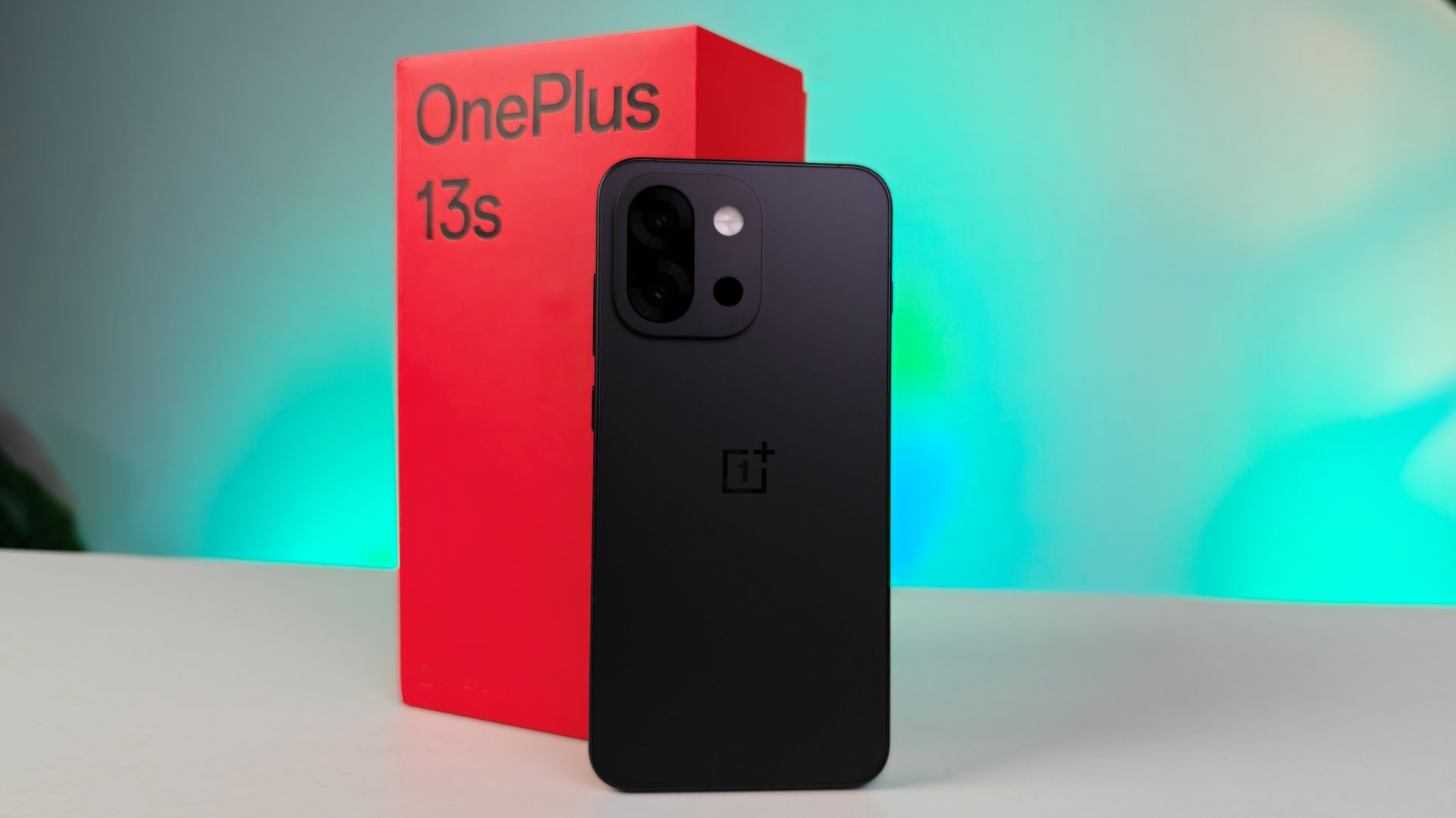
Right from the first unboxing, the OnePlus 13s gives off a refined, high-end vibe. The frosted glass back is not just about looks-it’s smudge-resistant and cool to the touch. The seamless flow into the aluminum alloy frame adds to the solid, unified feel. My Black Velvet unit had this understated elegance, but Green Silk and Pink Satin are also in the mix if you’re after a bit more flair.
It’s actually refreshing to see a flagship that isn’t oversized. At 150.8×71.7×8.2mm and 185g, it’s compact and comfortable-even during one-handed use or prolonged scrolling. The power button and volume rockers are located on the right side of the phone, with the volume rockers situated above the power key. On the left side, OnePlus has introduced an all-new “Plus Key,” a customizable button that replaces the traditional alert slider. This Plus Key just like the Action Key on the new iPhones allow users to assign shortcuts to functions like screenshots, flashlight, camera, voice recording, Do Not Disturb mode, and switching between sound profiles, offering a new level of personalized interaction. The phone supports dual Nano-SIM cards.
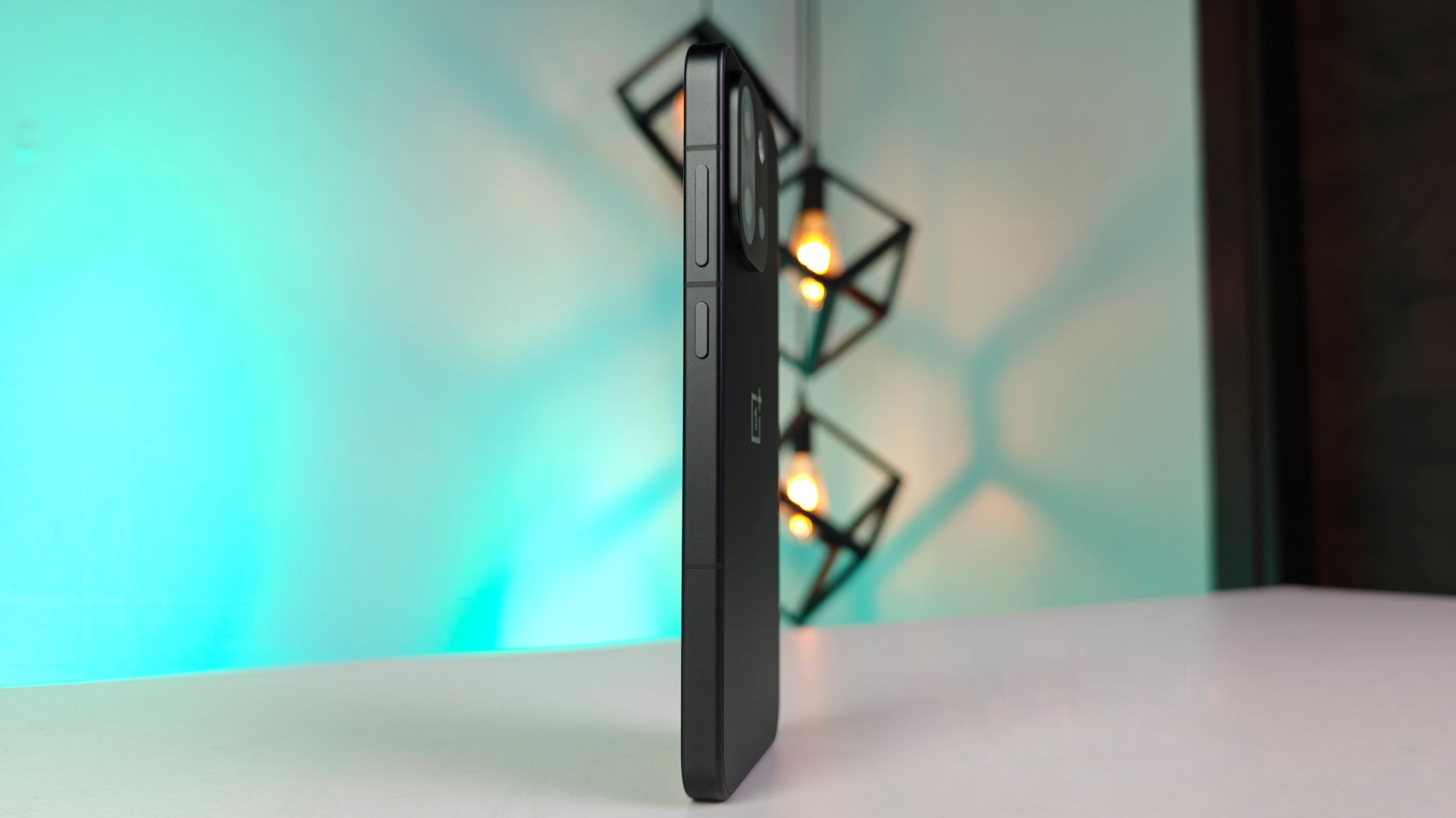
One subtle but meaningful point: the 13s embraces compactness without sacrificing premium features. With most flagships creeping toward phablet territory, this one feels like a nod to those of us who still value ergonomics. The 13s demonstrates that a top-tier smartphone experience, complete with a large, vibrant screen and powerful internals, does not necessitate an unwieldy size.
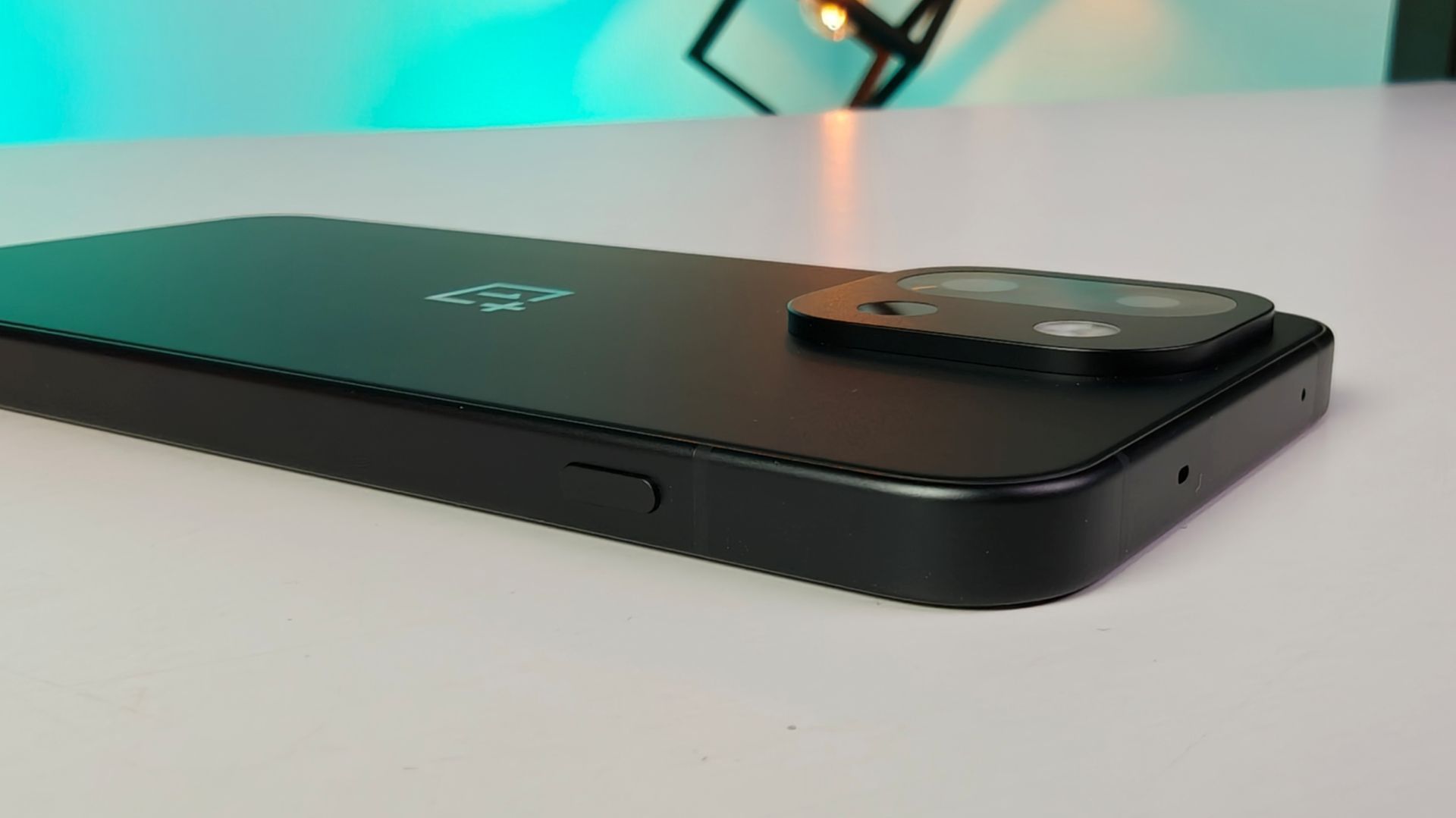
The rear camera housing is circular and slightly raised, but it doesn’t cause the phone to rock obnoxiously on flat surfaces. An IP65 rating signifies that the phone is dust-tight and resistant to low-pressure water jets but a better durability rating like IP69 was a missed opportunity! But hey, maybe the 14s/15s will have it. Fingers crossed for a better future.
A Seriously Impressive Display!
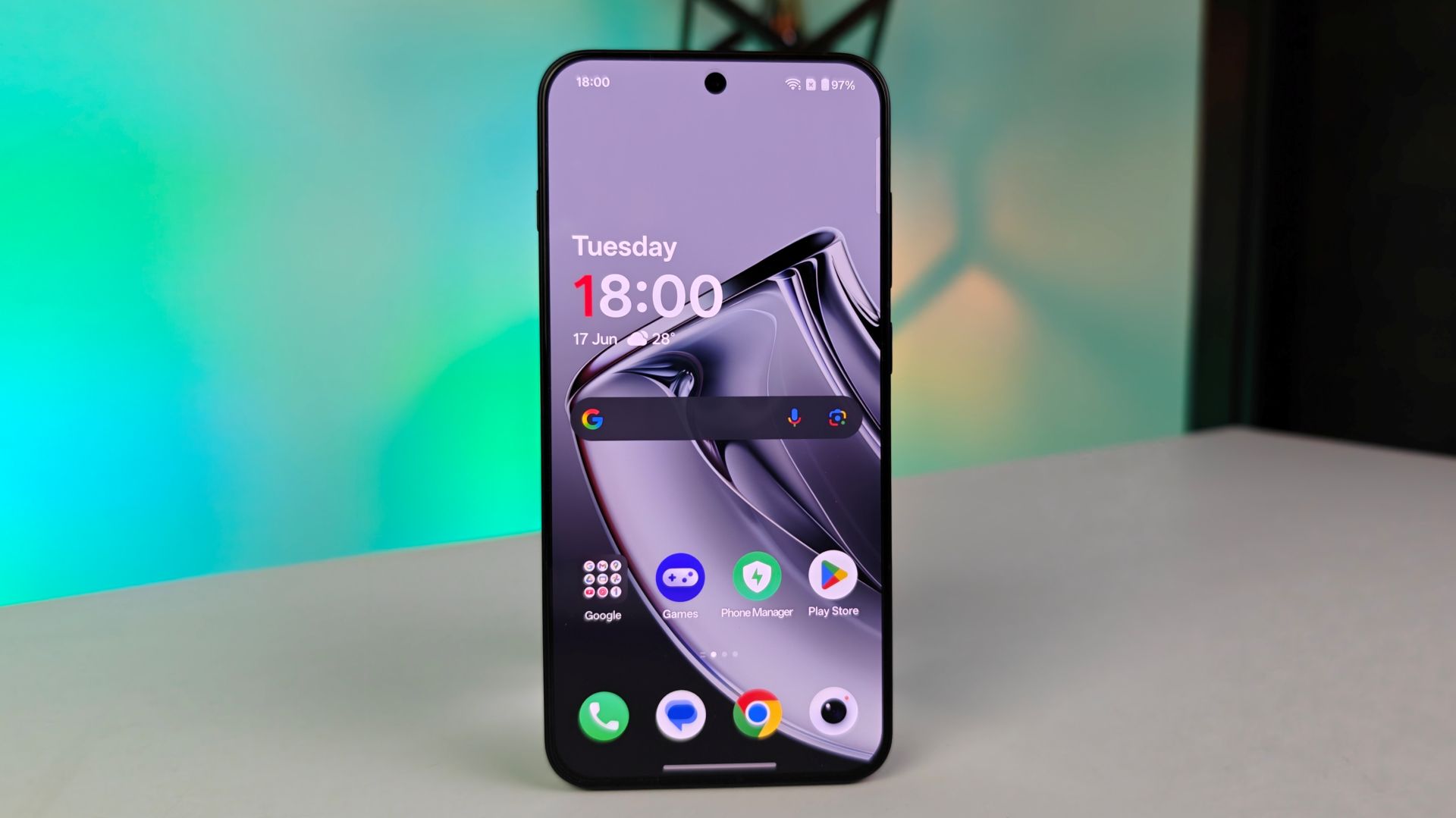
The 6.32-inch LTPO AMOLED display is arguably one of the best in its class. With a resolution of 1216×2640 (460ppi), 10-bit color, and full Display P3 color gamut coverage, it delivers vibrant visuals that really pop. The 1-120Hz dynamic refresh rate makes for buttery scrolling and smart power management.
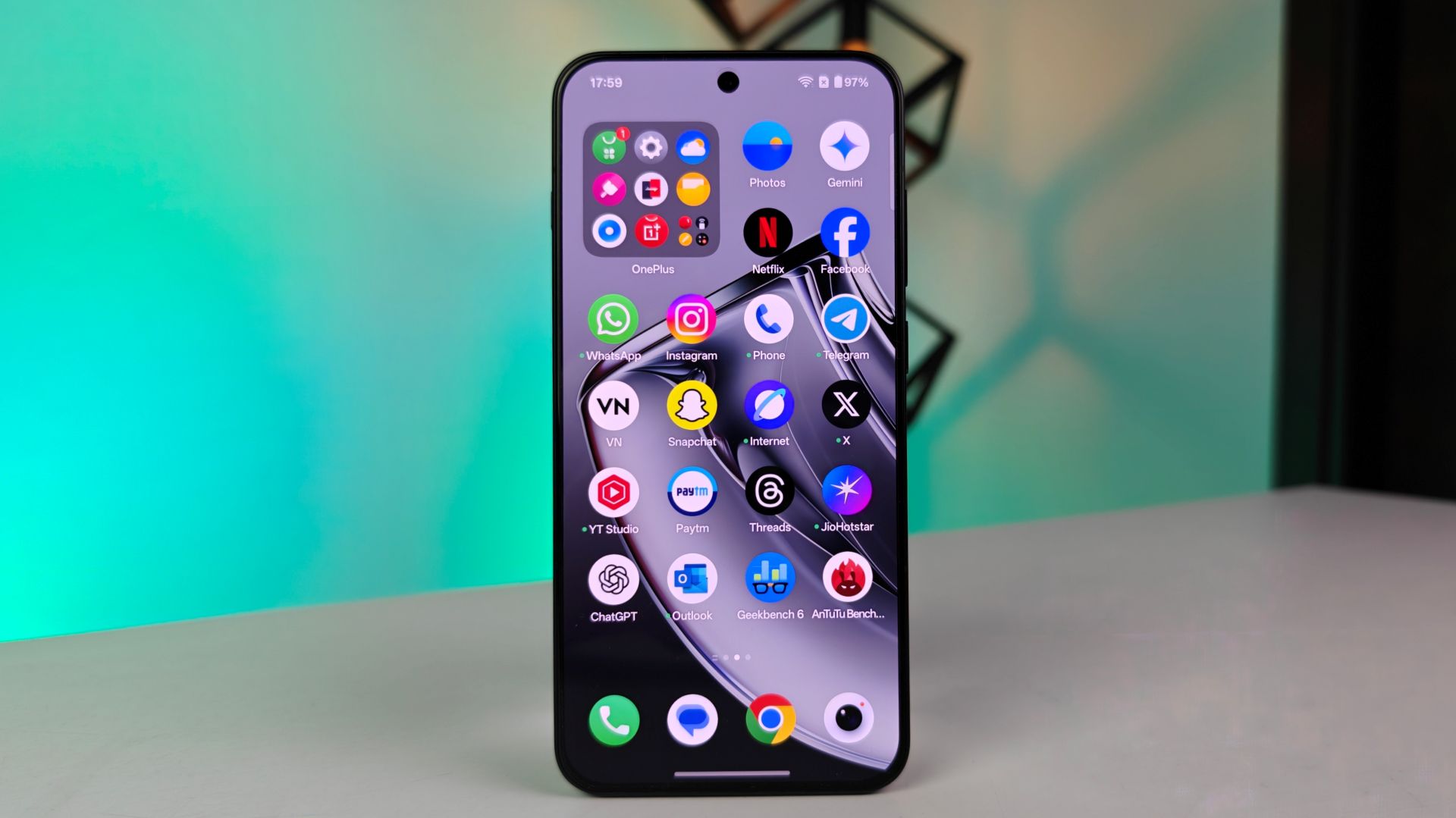
Peak brightness? A blazing 4500nits in HDR scenarios, and up to 1600nits in high brightness mode. Watching HDR10+ and Dolby Vision content on this panel was a joy – deep blacks, punchy highlights, and zero issues in bright sunlight. HDR content on platforms like Netflix and YouTube looked stunning, with deep blacks and bright highlights that added depth to every scene. The 2160Hz PWM dimming also helps reduce eye fatigue, which I definitely appreciated during late-night sessions. Plus, the Crystal Shield Glass keeps it well protected under most scenarios and accidental drops.
Performance:
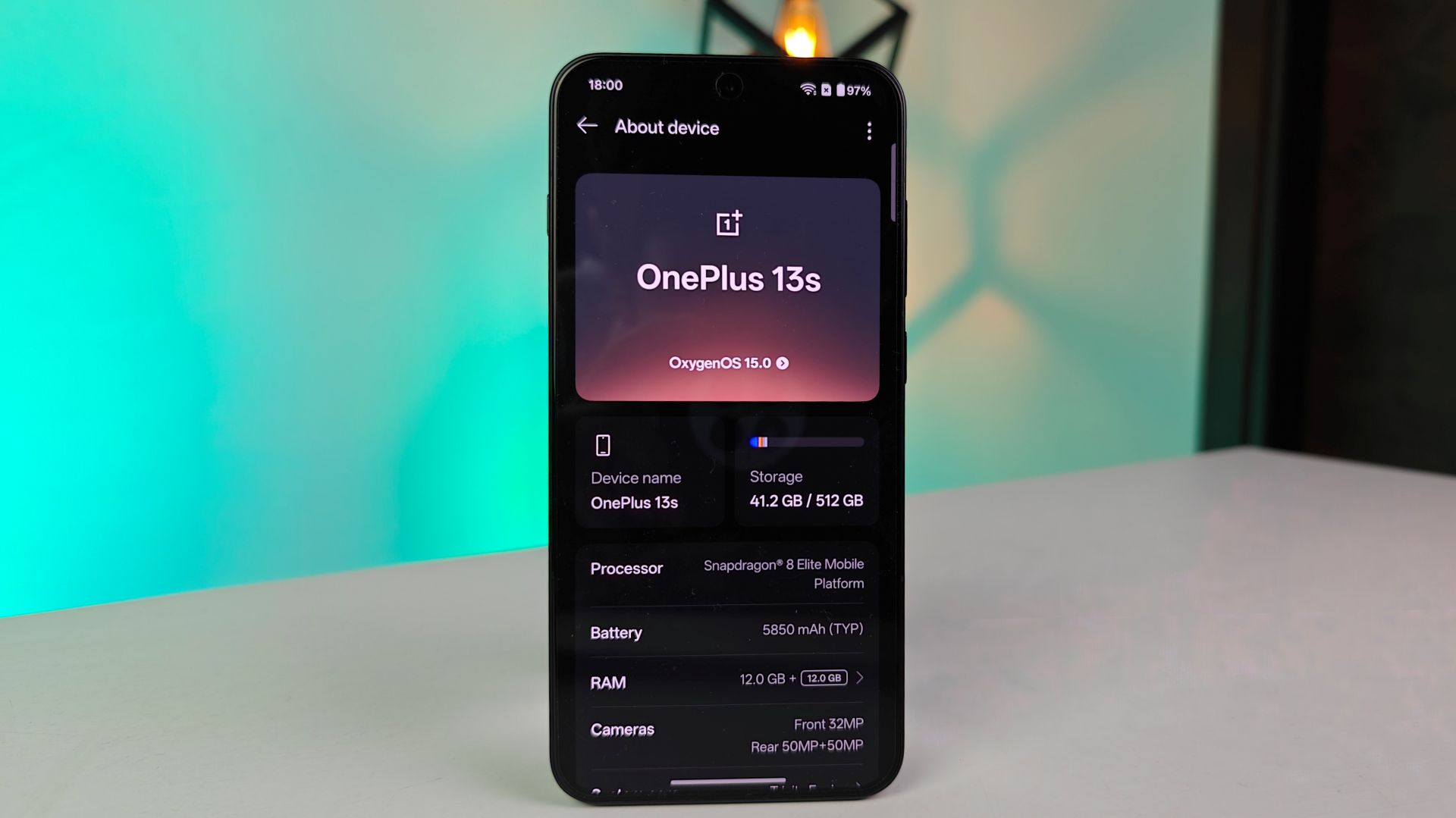
Powering the 13s is Qualcomm’s SM8750-AB Snapdragon 8 Elite (3nm), and it delivers. Its octa-core CPU configuration consists of two 4.32GHz Oryon V2 Phoenix L high performance cores and six 3.53GHz Oryon V2 Phoenix M efficiency cores. My review unit, with its 12GB of LPDDR5X RAM and 512GB of UFS 4.0 internal memory (no option of memory expansion via a microSD card), provided a performance powerhouse. This configuration ensured rapid app load times and file transfers.
Daily tasks, from opening multiple applications to switching between them, were handled with absolute fluidity, with no stutters, lag, or slowdowns encountered. Even during demanding multi-tasking, I experienced no CPU throttling.
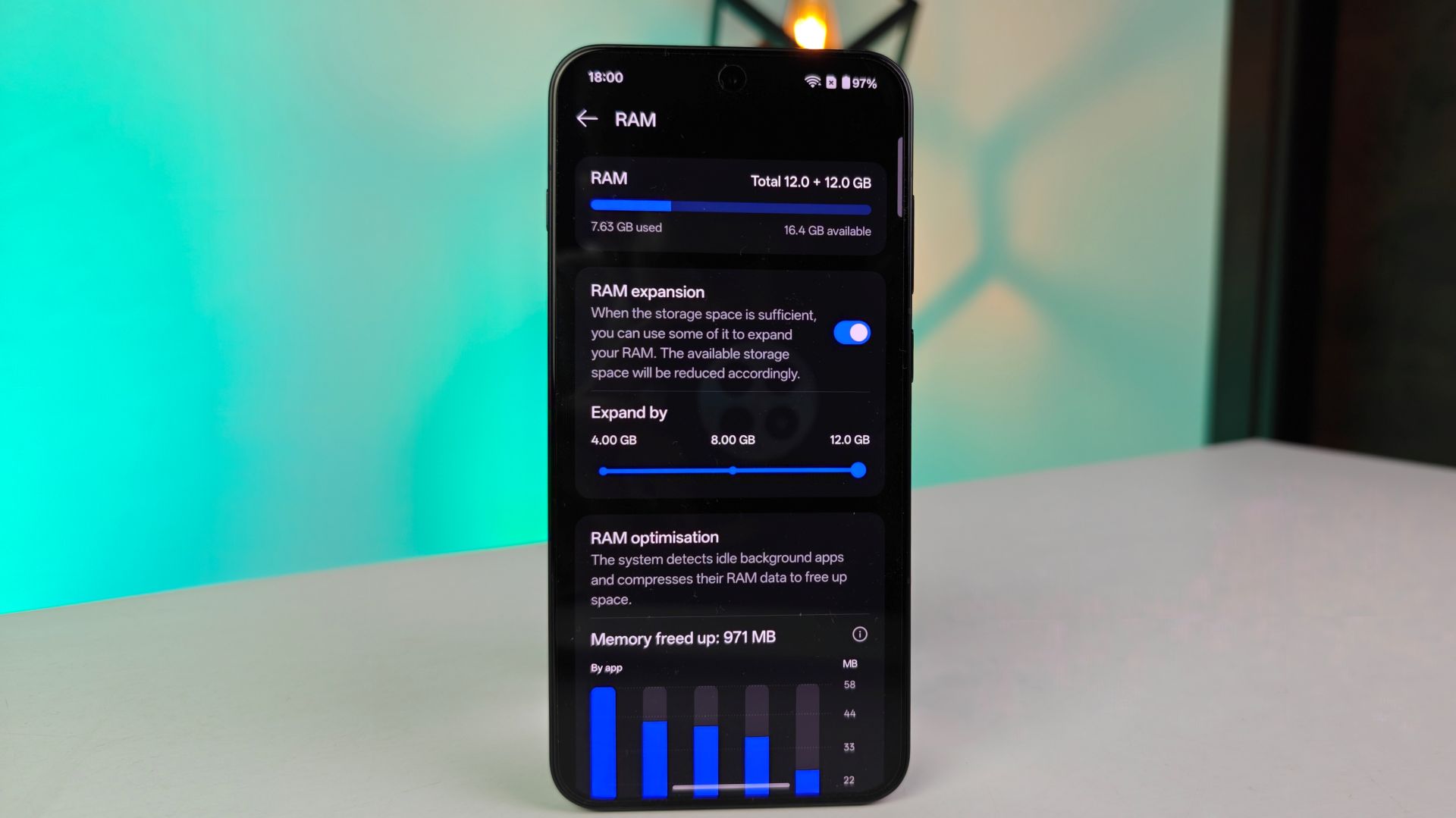
For gaming, the 13s is a not behind either. I spent hours playing titles like “Genshin Impact,” “Call of Duty Mobile,” and “Asphalt 9” at their highest graphics settings. Frame rates remained consistently high, and the gaming experience was really satisfactory. The Adreno 830 GPU within the Snapdragon 8 Elite handles complex graphics with ease, rendering detailed environments and fast-paced action without compromise. Benchmark tests like AnTuTu (v10), GeekBench (v6), and 3DMark (Wildlife Extreme) further confirm its top-tier performance, with scores of 2,499,190, 9,093, and 6,473 respectively.
Thermals stayed impressively in check – even after 30+ minutes of intense gameplay. There was some warmth near the camera module, but it never reached uncomfortable temperatures or showed signs of severe throttling. Clearly, the cooling system is doing its job. Please note that I did this testing in an AC room where the room temperature was maintained around 24 degrees Celsius.
Camera Performance:
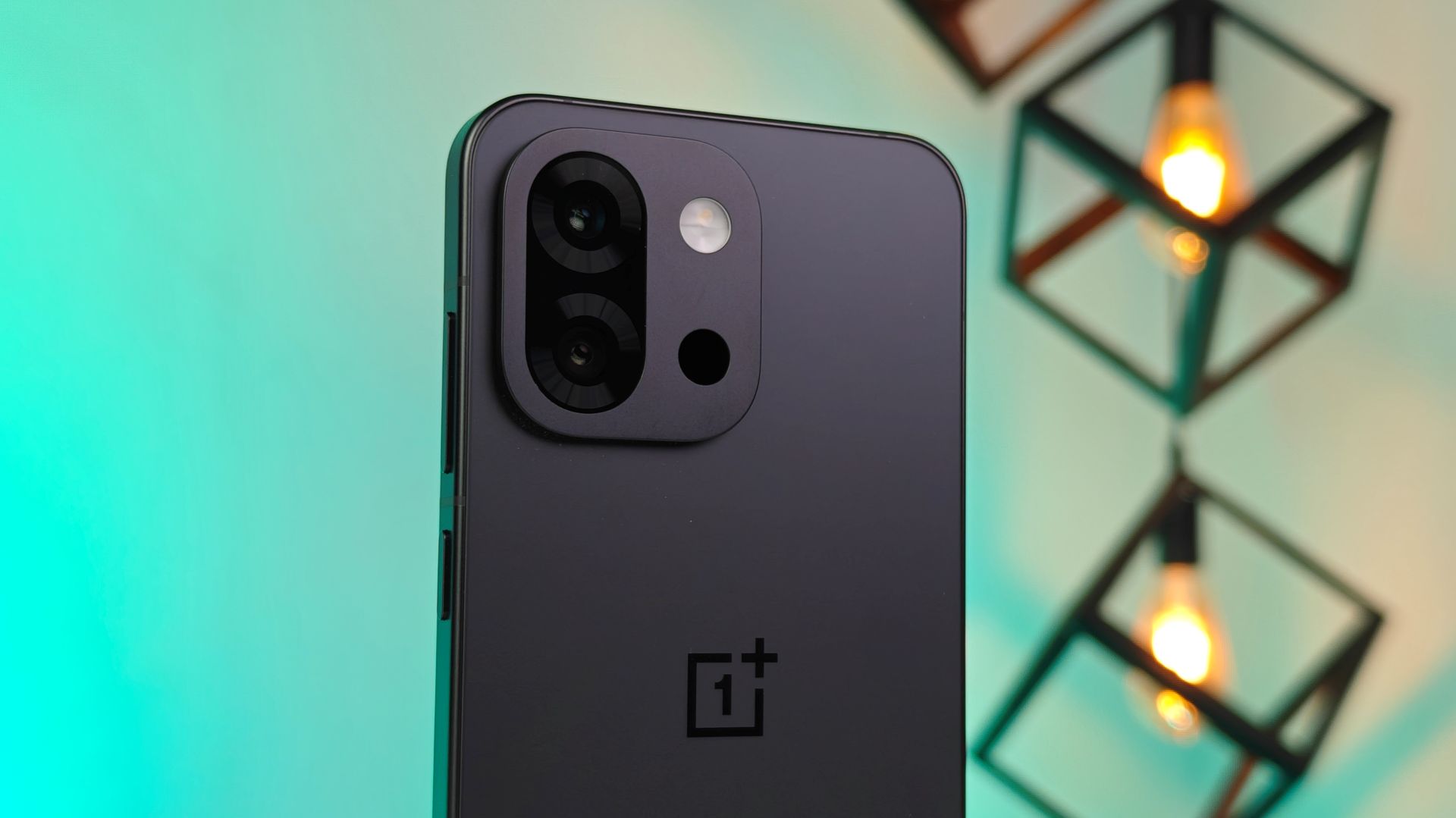
The 13s leans on a dual-camera setup and is not co-engineered with Hasselblad, so the experience is more like OnePlus 13R and not the 13. The main camera is a 50MP sensor with a bright f/1.8 aperture, a 24mm (wide) focal length, 1/1.56-inch sensor size, and 1.0µm pixels. It features multi-directional PDAF (Phase Detection Autofocus) and OIS (Optical Image Stabilization). In good lighting, this sensor captures lovely images with ample detail, natural colors which are not over-processed, and impressive dynamic range. Shots of landscapes and portraits both maintained a high level of fidelity. Low-light performance on the main sensor is strong, resulting in brighter images with less noise but it tends to soften such images.
The telephoto lens is a 50MP unit, with an f/2.0 aperture, 1/2.75-inch sensor size, and 0.64µm pixels. It offers 2x optical zoom with PDAF is useful, but admittedly not groundbreaking. Still, the image quality is sharp, and OIS helps keep those zoomed-in shots stable. I did miss having an ultrawide camera, especially for landscapes and architecture.
The camera system is complemented by a color spectrum sensor, LED flash, HDR, and panorama features, enhancing versatility in various shooting conditions.
Video recording capabilities are robust. The main camera supports 4K at 30/60fps and 1080p at 30/60/240fps, with gyro-EIS, OIS, and Dolby Vision HDR for enhanced dynamic range in videos. While 4K 60fps video is smooth and detailed in well-lit conditions, low-light video recorded still shows noticeable noise and a reduction in fine detail. It’s not terrible, but it does show room for improvement.
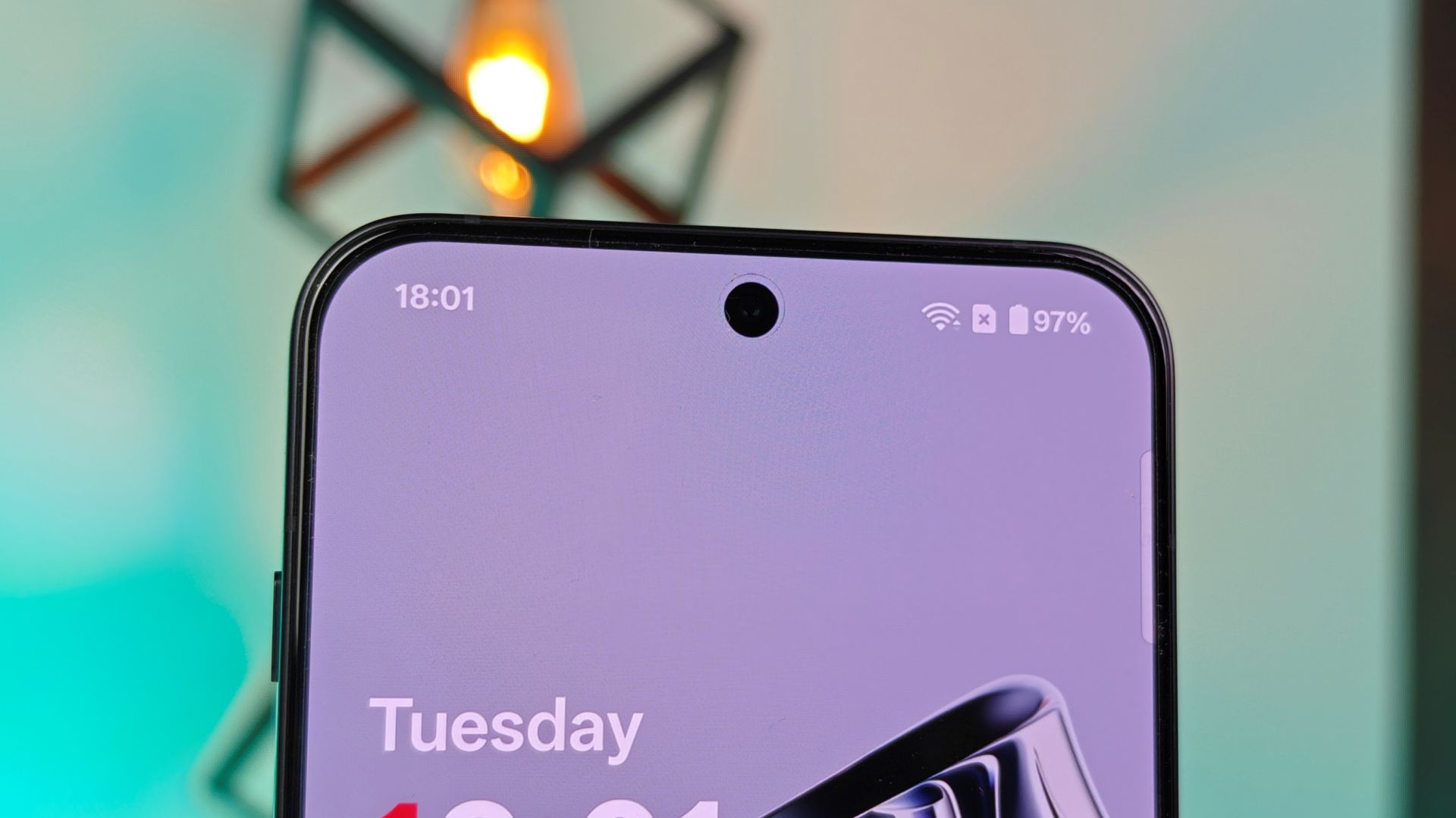
The front-facing camera is a 32MP sensor with an f/2.0 aperture, 21mm (wide) focal length, 1/3.1-inch sensor, 0.7µm pixels, and autofocus. It captures clear and vibrant selfies, and performs well for video calls, supporting 4K at 30fps and 1080p at 30fps with gyro-EIS for stable footage.
Battery & Charging:
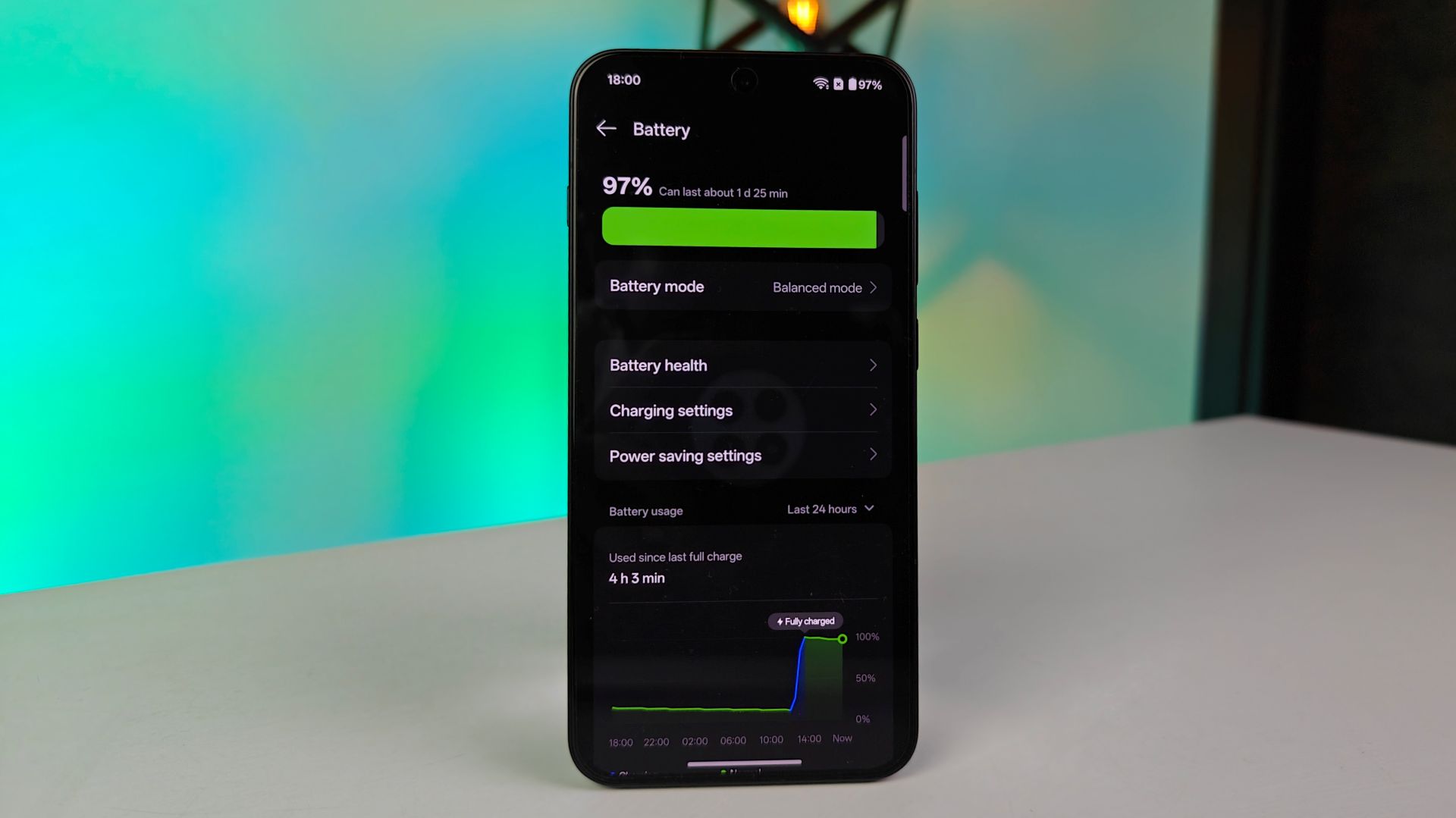
The 5,850mAh battery combined with the power-efficient Snapdragon 8 Elite and LTPO display, delivered excellent battery life. In my testing, I easily got through a full day of very good use – couple of hours of gaming, IG scrolling, and photography – with 20-25% still in the tank by night.
Charging is where OnePlus continues to shine. With 80W SUPERVOOC, it goes from 0 to 100 in just about 45 minutes. That’s fast enough to make overnight charging almost obsolete. And if you’re low on time, even a 5-minute top-up can carry you through a meeting or commute.
Getting this kind of battery solution in a compact phone is such a blessing! And OnePlus has hit it out of the park this time when it comes to battery and charging capabilities of this phone!
OxygenOS: Clean, Smooth, Customizable!
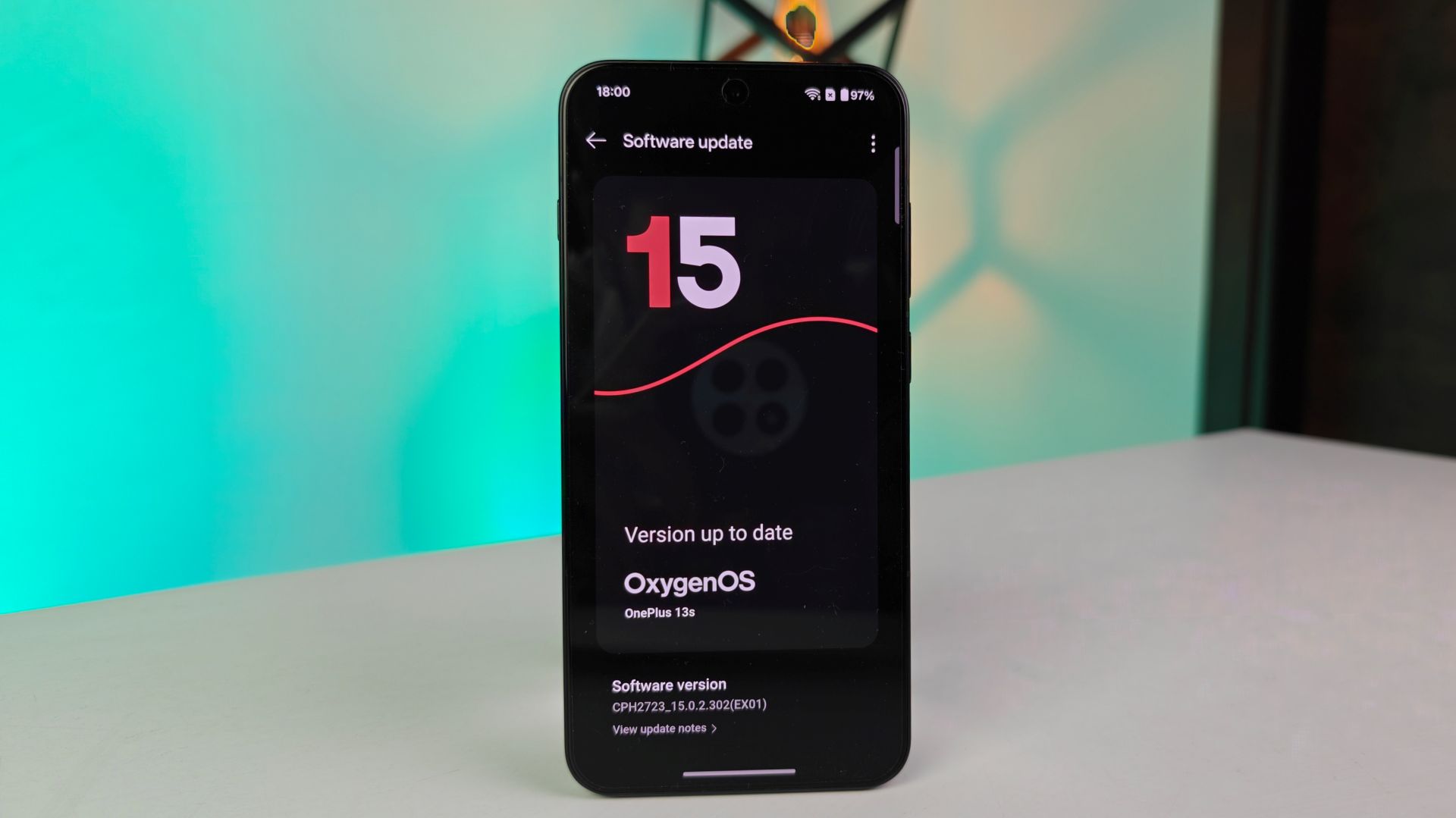
OxygenOS 15, based on Android 15, is a joy to use. It feels lightweight but flexible, offering thoughtful features without feeling bloated. Transitions are fluid, and the system is fast to respond. OxygenOS has evolved over the years, and the current iteration maintains its reputation for being a clean, fast, and highly customizable Android skin. The user interface is fluid and intuitive, with smooth animations and quick transitions between apps. There is a sense of responsiveness throughout the system that complements the powerful hardware.
Customization options are solid—you can tweak icons, fonts, colors, and more. The Shelf, accessible with a swipe down from the top right of the home screen, offers quick access to widgets and information. Zen Space is still a nice touch for those looking to digitally detox now and then. “Circle to Search” is another handy feature, allowing you to draw around anything on screen to trigger a quick Google search.
Throughout my testing, OxygenOS was stable, with no noticeable bugs or crashes. Pre-installed bloatware is minimal, limited primarily to a few standard Google apps and core OnePlus applications, which is a positive aspect for users who prefer a clean software experience. The haptic feedback system is also finely tuned within OxygenOS, providing crisp and precise vibrations for typing and interactions.
And future updates commitment? You’re getting three major Android updates and four years of security patches—not quite as extensive as some rivals, but respectable.
Connectivity and Audio:
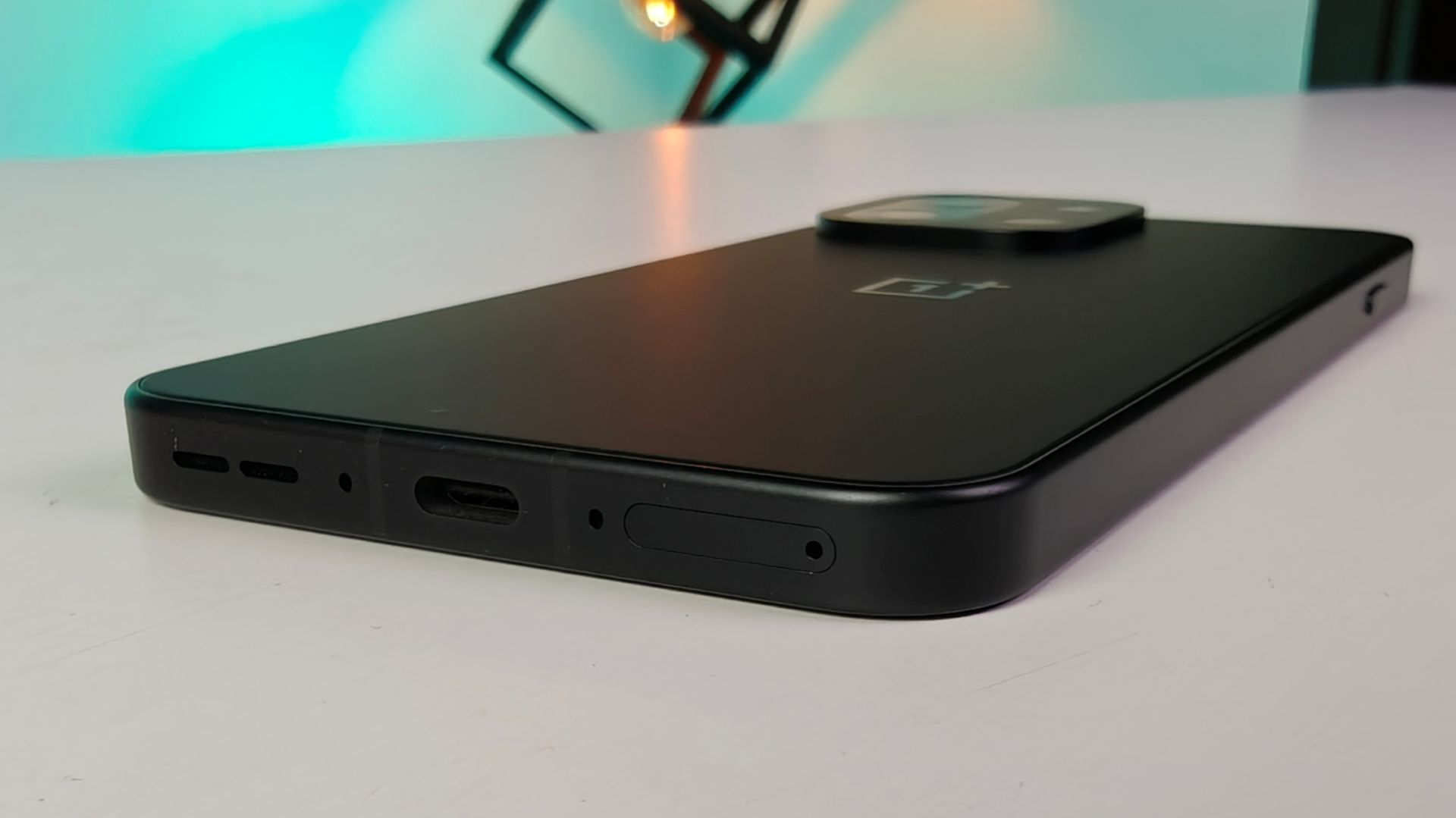
From 5G (1,3,5,8,26,28,38,40,41,48,66,77,78 SA/NSA bands), LTE(CA), HSPA, to Wi-Fi 7 (802.11 a/b/g/n/ac/6/7) , Bluetooth 6.0 with A2DP, and NFC, the 13s is well-equipped for modern connectivity needs. During my tests, 5G performance was consistent, with reliable signal strength and fast download/upload speeds. It even includes an IR blaster—a niche but genuinely useful addition for controlling appliances. Bluetooth 6.0 with A2DP, LE, aptX HD, and LHDC 5 offers efficient and stable connections to wireless headphones and other peripherals with high-quality audio codecs.
Audio-wise, the stereo speakers impressed me. They’re loud, well-balanced, and don’t distort at max volume. While there’s no 3.5mm headphone jack, the sound over Bluetooth (thanks to aptX HD and LHDC 5) is excellent. Call quality was equally strong, even in noisy environments.
Security and Biometrics:
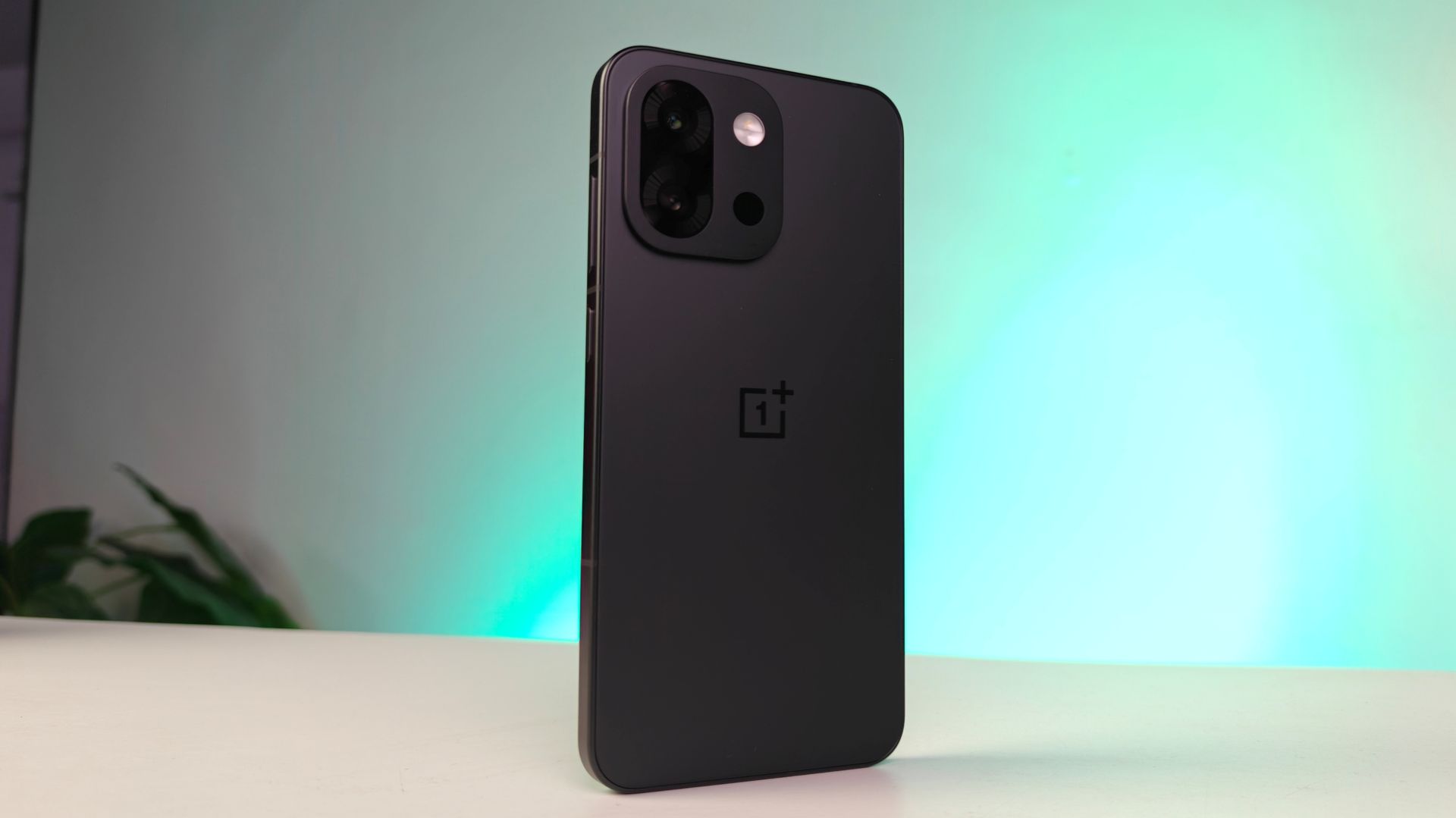
It features an optical in-display fingerprint sensor positioned conveniently towards the bottom of the screen. In my experience, the sensor was consistently fast and accurate, unlocking the phone almost instantaneously with a single touch. Its placement is natural for thumb access, making it comfortable to use.
Face unlock is also available and works quickly using the front camera. While it’s generally convenient in well-lit conditions, it’s not as secure as the fingerprint sensor or 3D facial recognition systems found on some other flagships, as it relies on a 2D scan. Standard Android security features, such as app permissions, privacy dashboard, and regular security updates from OxygenOS, further protect user data. The phone includes an accelerometer, gyro, proximity sensor, and compass, which contribute to various system functionalities and user experience.
The Verdict:
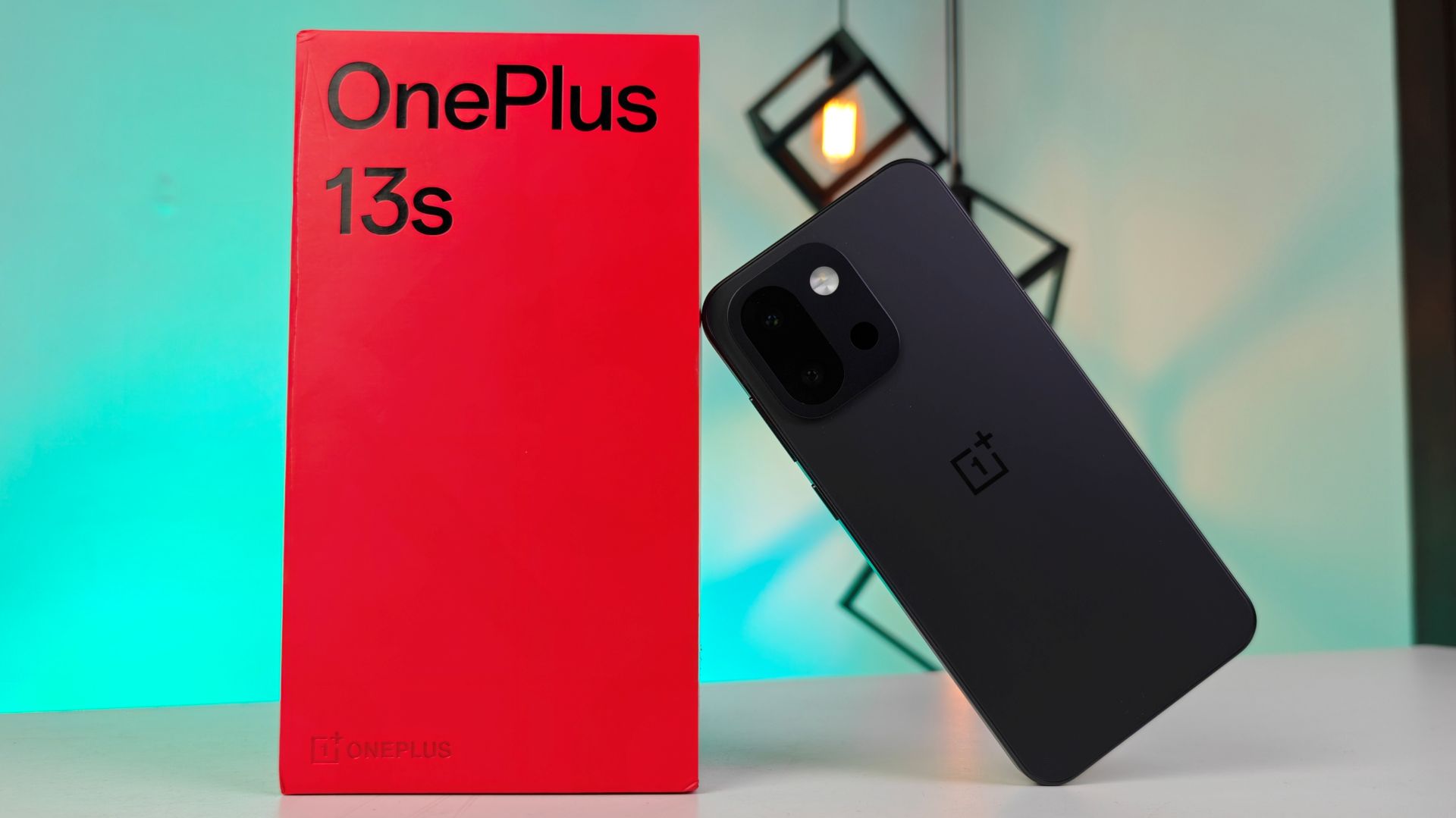
The OnePlus 13s lands right where it should-as a fast, thoughtfully designed compact flagship with standout performance and usability. While it doesn’t tick every single box (the missing ultrawide lens, limited zoom, and USB 2.0 might give power users pause), it nails the fundamentals.
If your priorities include a sharp, vibrant display, blazing performance, long-lasting battery, and lightning-fast charging, the 13s is hard to argue against. It’s not flashy for the sake of it-it’s deliberate, powerful, and easy to live with.
At ₹54,999, it delivers a flagship experience that feels fast, fluid, and dependable. For most users, that combination is more than enough to earn a spot on your shortlist.
FAQs:
Q: What kind of display does the OnePlus 13s have?
A: A 6.32″ LTPO AMOLED with 1216×2640 resolution, 120Hz dynamic refresh, Dolby Vision, HDR10+, HDR Vivid, and 2160Hz PWM dimming.
Q: How fast does the OnePlus 13s charge?
A: It supports 80W SUPERVOOC wired charging (0-100% in ~30 min), plus multiple protocols including PPS, PD, QC, and 5W reverse wired.
Q: Is the OnePlus 13s good for gaming?
A: The OnePlus 13s is excellent for gaming due to its powerful Qualcomm SM8750-AB Snapdragon 8 Elite (3nm) processor with an octa-core CPU (including 4.32GHz Oryon V2 Phoenix L cores) and Adreno 830 GPU, ample 12GB LPDDR5X RAM, fast UFS 4.0 storage, and an advanced cooling system, ensuring sustained high performance.
Q: Does the OnePlus 13s have an IP rating for water resistance?
A: Yes, with an IP65 rating-good for dust and water splashes, though not immersion.
Q: What camera features are highlighted on the OnePlus 13s?
A: 50MP main and 50MP telephoto (2x zoom), Hasselblad tuning, 4K video, great selfies via 32MP front camera.
Q: What version of Android does the OnePlus 13s run?
A: OxygenOS 15 based on Android 15.
Q: How many years of software updates can I expect for the OnePlus 13s?
A: Three major Android updates and four years of security patches.
Q: Does the OnePlus 13s have a headphone jack?
A: No, the OnePlus 13s does not include a 3.5mm headphone jack.


